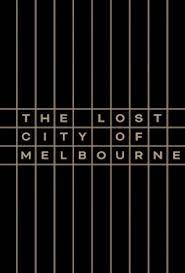
THE LOST CITY OF MELBOURNE
Australia, 2022, 83 minutes, Colour.
Directed by Gus Berger.
Back in the boom years of the 19th century, the aftermath of the gold rush, the development of business centres, the city was called “Marvellous Melbourne”. And its citizens built the city accordingly. But, as this film reminds us, so much of this great heyday period was demolished. And, there is also a sense of lamentation here that in the 1960s into the 1970s, demolition was the rage, down with the outmoded old, in with the glossy new, hotels, theatres, cinema out, glass skyscrapers in.
And, so many times displayed during this demolition, the notice is seen “Whelan the Wrecker is here” (and, one of the still standing Melbourne monuments, Barry Humphries, is seen back in the day walking and interviewing one of the Whelan family).
So, a cinema document of Melbourne, of great interest, of course, to Melbournites and to Victorians. (One hopes it will get a release in Sydney!).
And, of course, the impact will depend on the age of the audience. For younger cinemagoers, even the 1980s will have the touch of ancient history. But, for middle-aged audiences and, especially, older audiences, there will be mixes of regrets and nostalgia. (For instance, this reviewer first visited Melbourne from Sydney in 1951, living out in the countryside which is now suburban near Tullamarine, but able to go into the city to visit those picture palaces, Regent, Plaza, Athenaeum, Metro all in Collins Street the Metro in Bourke Street later the Palace… Memories and memories.)
With expert talking heads, we are given the history of Melbourne, commentary, but highly visual (and an extraordinary amount of credits at the end for each and every photo and film clip). We go back to the 1850s and move on over the next hundred years with some detail, buildings, mighty and prosperous ambitions, mansions, and mighty stone edifices. One of the amazing things from the photos and the clips is just how many people were in central Melbourne, crowds in Bourke Street and Collins Street in those days.
While a lot of the demolition is to be regretted, the commentators do point out some of the difficulties in maintaining the buildings, safety regulations and continued demands, improvements in technology, health regulations and hygiene… To the extent, we suppose, those buildings had to go. But, of course, not all of them. And, not all of them have gone – acknowledgement of the Windsor Hotel, the survival of the Rivoli, Astor, Balwyn cinemas. For moviegoers, especially those with long memories, much of the film is a history of the old cinemas, their place in the 20s and 30s, the rise of television, the disappearances.
In the overview of the history there is some aspects which might have received some or more attention, the acknowledgement of the churches in Collins Street is there but nothing of St Paul’s or St Patrick’s. Ultimately, the Exhibition Building is shown but there is very little on the move towards Federation and the fact of the first Australian parliament in Melbourne. But, all of us will have aspects we would like to have seen – then we’ll have to enjoy what is actually shown us.